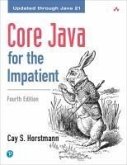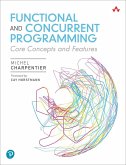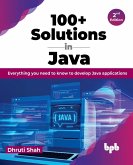The Classic Guide to Advanced Java Programming: Fully Updated for Java 21 Core Java is the leading no-nonsense tutorial and reference for experienced programmers who want to write robust Java code for real-world applications. Now, Core Java, Volume II: Fundamentals, Thirteenth Edition, has been revised to cover the new features and enhancements in the Java 21 long-term support release. As always, all chapters have been completely updated, outdated material has been removed, and the new APIs are covered in detail. This volume focuses on the advanced topics that a programmer needs to know for professional software development and includes authoritative coverage of enterprise programming, networking, databases, security, internationalization, and native methods, as well as complete chapters on the Streams, XML, Date and Time, Scripting, and Compilation APIs. In addition, the chapters on Swing and Graphics cover techniques that are applicable to both client-side user interfaces and server-side generation of graphics and images. Cay S. Horstmann clearly explains sophisticated new features with depth and completeness and demonstrates how to use them to build professional-quality applications. Horstmann's thoroughly tested sample code reflects modern Java style and best practices. The examples are carefully crafted for easy understanding and maximum practical value, so you can rely on them to jump-start your own programs. * Master advanced techniques, idioms, and best practices for writing reliable Java code * Make the most of enhanced Java I/O APIs, object serialization, and regular expressions * Connect to network services, harvest web data with the HTTP/2 client, and serve data with the built-in web server or implement your own server * Process code via the Scripting and Compiler APIs * Work with the Date and Time API, including recent refinements * Leverage the Java security model, user authentication, and the security library's cryptographic functions * Preview powerful new APIs for accessing "foreign" functions and memory "This is the definitive reference and instructional work for Java and the Java ecosystem." --Andrew Binstock, Java Magazine See Core Java, Volume I: Fundamentals, Thirteenth Edition, for expert coverage of Java programming fundamentals, including objects, generics, collections, lambda expressions, concurrency, and functional programming. Register your book for convenient access to downloads, updates, and/or corrections as they become available. See inside book for details.
Bitte wählen Sie Ihr Anliegen aus.
Rechnungen
Retourenschein anfordern
Bestellstatus
Storno








